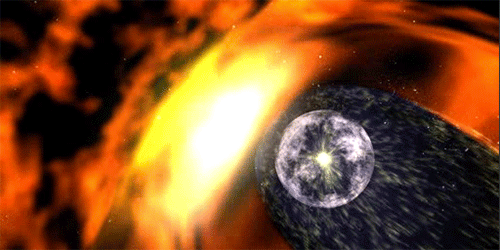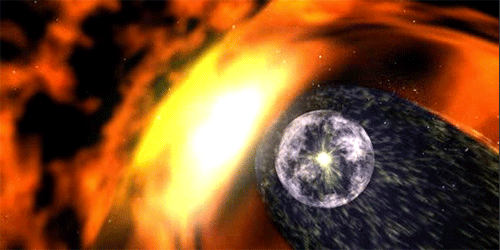Blocking out the Sun
Several experiments in Earth’s orbit are painstakingly measuring the cosmic-ray spectrum in the hope of spotting particles that come from exotic sources, such as dark matter. The contributions from these sources are certain to be small, so the Sun’s modification of the spectrum—a sizeable effect that varies with the seasons—has to be known with precision. Theorists have now derived a more accurate formula for this modulation that can be used by multiple experiments and at any time of the year.
When modeling the cosmic-ray spectrum, researchers account for the Sun’s influence by adding in a so-called modulation potential. This effective force describes the magnetic field of the solar wind, which deflects and decelerates charged particles in cosmic rays as they journey towards detectors near Earth. However, the magnetic field changes frequently—its polarity, for example, flips every 11 years—so each experiment usually needs to determine the modulation potential anew.
Ilias Cholis of Johns Hopkins University, Maryland, and colleagues have found a more enduring formula. To do so, they re-derived the potential in terms of parameters that they could determine from satellite measurements of the solar wind. They then crosschecked these parameters against cosmic-ray data from two recent satellite experiments (AMS and PAMELA) and the balloon-borne experiment BESS. Finally, to confirm that their formula correctly predicted the solar modulation, the authors needed a spectrum that was “untouched” by the Sun. These data were provided by Voyager I, which, in 2012, flew through the heliopause of our Solar System, the region where the solar wind cuts out.
This research is published in Physical Review D.
–Jessica Thomas





